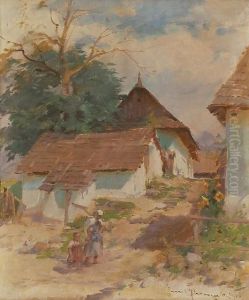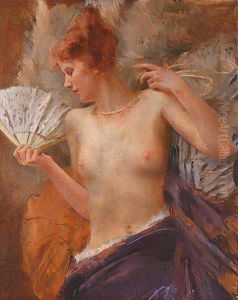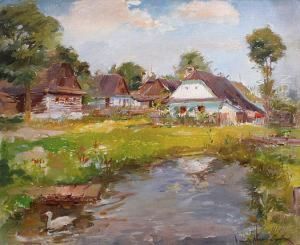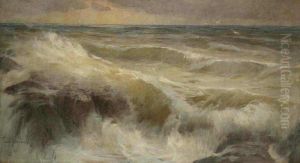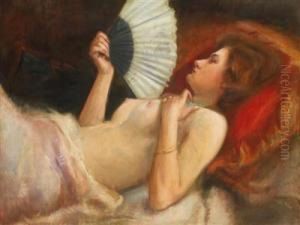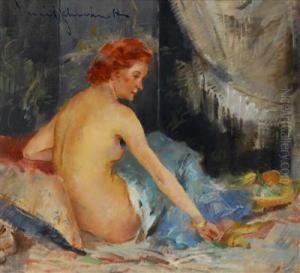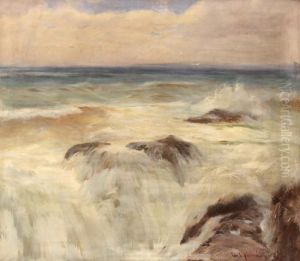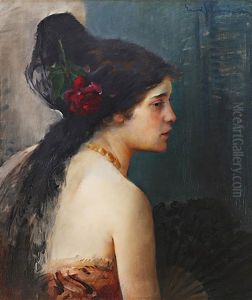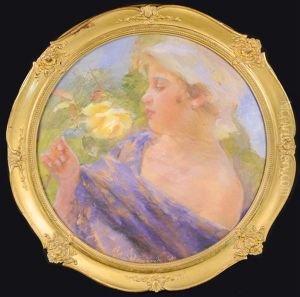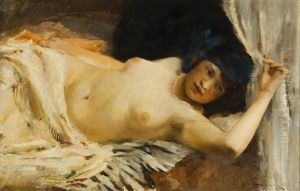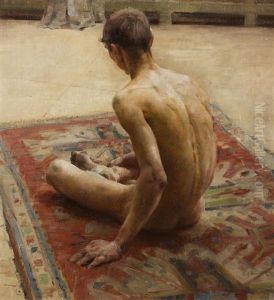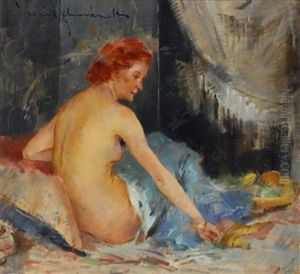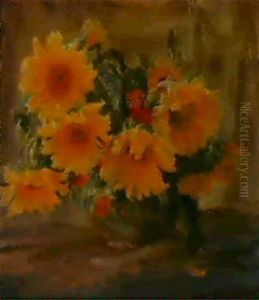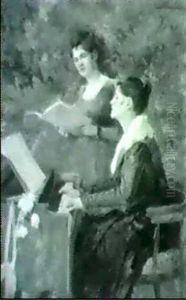Emil Schovanek Paintings
Emil Schovanek was a painter born on April 30, 1901, in Prague, which was then part of the Austro-Hungarian Empire and is now the capital of the Czech Republic. Not much is widely known about his early life or artistic training, which is often the case with lesser-known artists of the early 20th century. What is clear, though, is that he became active as an artist and was part of the vibrant cultural and artistic scenes that characterized Central Europe during the interwar period.
His artistic career unfolded during a dynamic time in European art, as modernist movements such as expressionism, surrealism, and cubism were taking hold. Schovanek's work, however, remained primarily representational and figurative, focusing on landscapes, still lifes, and portraits. His style was characterized by a subdued palette and a focus on the interplay of light and shadow, which gave his paintings a serene and often melancholic atmosphere.
Throughout his career, Schovanek traveled and worked in various European countries, including France, where he spent some time in Paris. The city was a hub for artists, offering inspiration and the opportunity to engage with the avant-garde movements of the time. Despite these influences, Schovanek maintained his own distinct aesthetic, which leaned towards traditional representation rather than the experimental styles of many of his contemporaries.
Schovanek's life and career were undoubtedly affected by the tumultuous events of the 20th century, including the two World Wars and the political upheavals in Europe. Information about his later life and career is scarce, but it is known that he continued to paint until his death. Emil Schovanek passed away on January 31, 1967. His work is held in private collections and may occasionally appear at auction, but he remains a relatively obscure figure in the history of European art. His legacy is that of a skilled painter who captured the landscapes and moods of his time with a quiet intensity and a personal vision that resisted the pull of the dominant artistic trends of his era.
